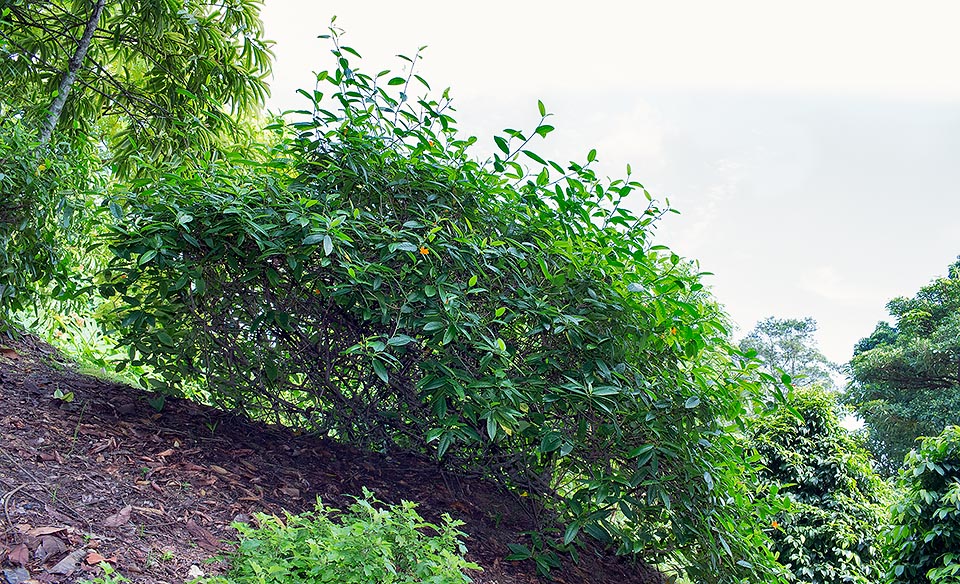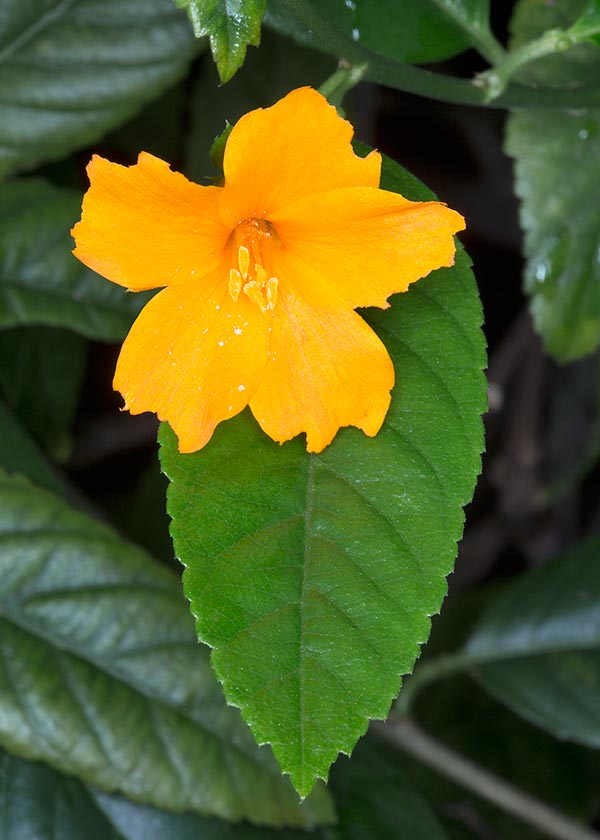Family : Passifloraceae

Text © Pietro Puccio

English translation by Mario Beltramini

Uncommon passion flowers relative, the Turnera aurantiaca is a perennial evergreen shrub, very ramified, 1-3 m tall, native to Brazil and Guyana © Giuseppe Mazza

In the tropics it's almost always blooming with luminous isolated corollas of about 5 cm of diameter © Giuseppe Mazza
Common names: orange turnera (English); flor côr de laranja (Brazil).
The Turnera aurantiaca Benth. (1842) is a perennial evergreen shrub, very ramified, 1-3 m tall, with cylindrical stems irregularly streaked and simple, alternate, ovate-lanceolate leaves with crenate-indented margin and pointed apex, glabrous above, slightly pubescent below, 5-10 cm long and 2,5-4 cm broad.
The petiole, 0,5-1 cm long, is equipped with a couple, rarely two, of nectariferous glands placed close to the foliar lamina, sessile, of 1-2 mm of diameter.
The flowers, on a 1,5-5 cm long peduncle, solitary, ephemerous, produced at the axil of the upper leaves, have a corolla of about 5 cm of diameter, formed by 5 obovate petals of intense orange colour.
The fruits are globose glabrous or villous capsules, of about 0,8 cm of diameter, containing obovate seeds slightly curved, about 3 mm long and of 1,6 mm of diameter, with marked longitudinal streaks, of brown colour.
It propagates by seed, in sandy organic loam maintained humid at the temperature of 24-26 °C, and by cutting.
Species with an almost continuous blooming in the origin locations, but little known elsewhere, in spite of the undeniable ornamental characteristic, cultivable in the tropical and subtropical regions in full sun or partial shade; is not particular about the soil, provided particularly draining.
→ To appreciate the biodiversity within PASSIFLORACEAE family please click here.
